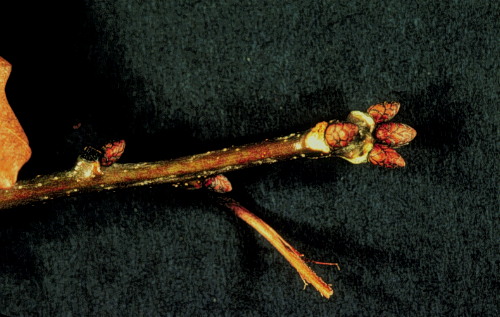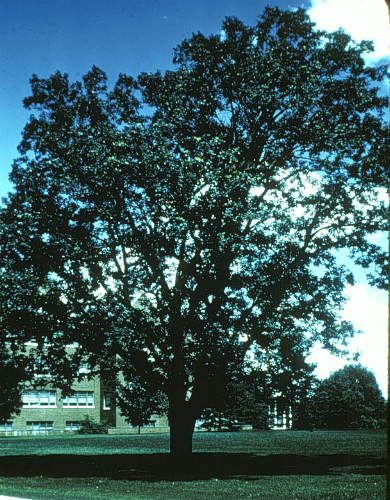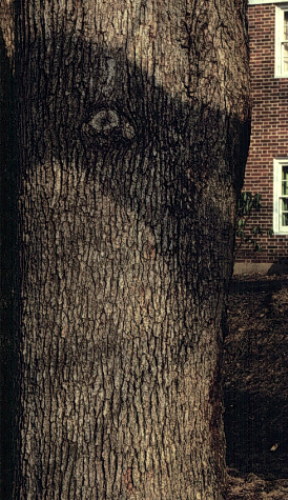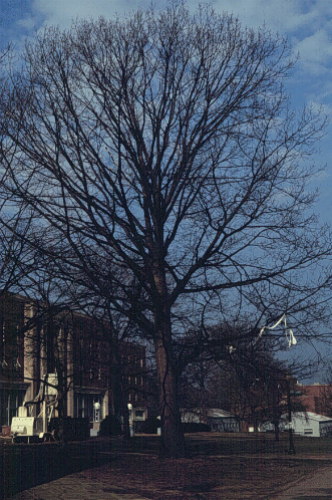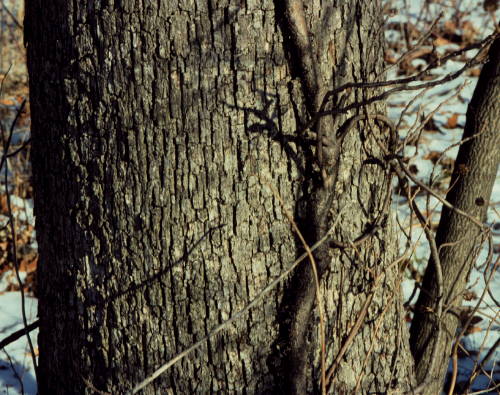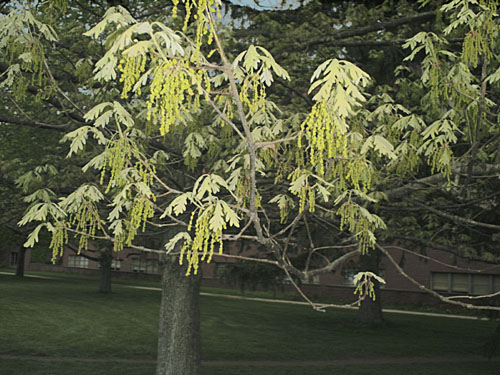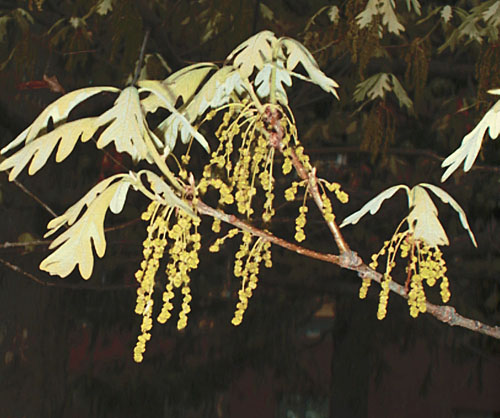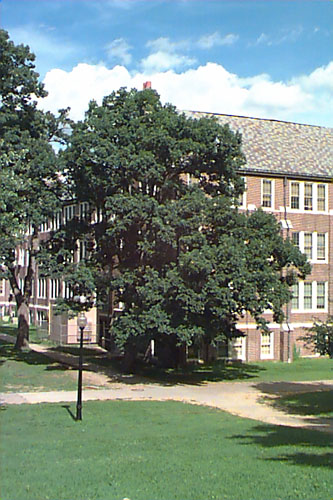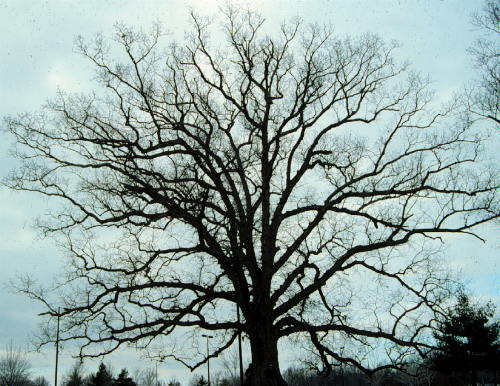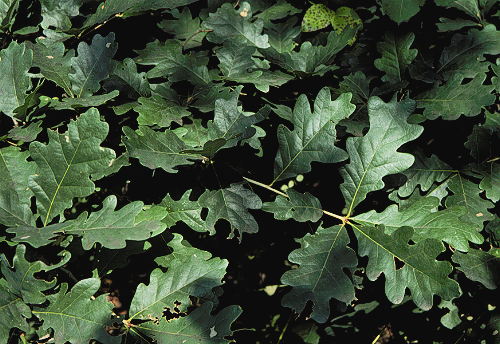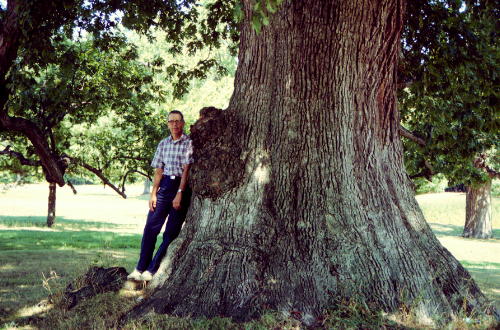Quercus alba
White Oak
Fagaceae
ExpandHabitat
- eastern and central U. S.
- zone 4, possibly warmer parts of 3
Habit and Form
- a large, deciduous tree
- 60 to 80' tall
- as wide or wider, than tall
- pyramidal when young
- rounded, broad-rounded or upright rounded when mature
- branching is irregular and wide-spreading; interesting
Summer Foliage
- alternate leaf arrangement
- leaves are 4" to 8" long
- rounded lobes
- 5 to 9 lobes per leaf
- color is dull, blue-green when mature
- new leaves are a bright, grayish green
Autumn Foliage
- purple-red
- generally fairly showy
- color develops late
- color is long lasting
Flowers
- monoecious
- male flowers are pendulous yellow-green catkins
- blooms in May
- messy
Fruit
- elongated acorn in pairs on singly
- 0.75" to 1" long
- bowl-like cap is bumpy
- acorns mature in a single season
- fruit can be numerous
Bark
- white or light gray, flaky bark
- ornamentally attractive
Culture
- full sun
- acidic soil
- transplant at a small size
- can be difficult to move and establish
- dislikes being disturbed
- slow-growing
Landscape Use
- shade tree
- for large area
- existing native trees are often saved during construction
- one of the most attractive oaks
- long-lived and desirable
Liabilities
- slow-growing
- difficult to transplant and establish
- numerous caterpillar prefers feeding on white oak, esp. gypsy moth
- numerous insect and disease pests, but damage is rarely significant
ID Features
- leaves with rounded lobes
- ashy gray or white, flaky bark
- small, elongated acorns
Propagation
- by seed
Cultivars/Varieties
- none
